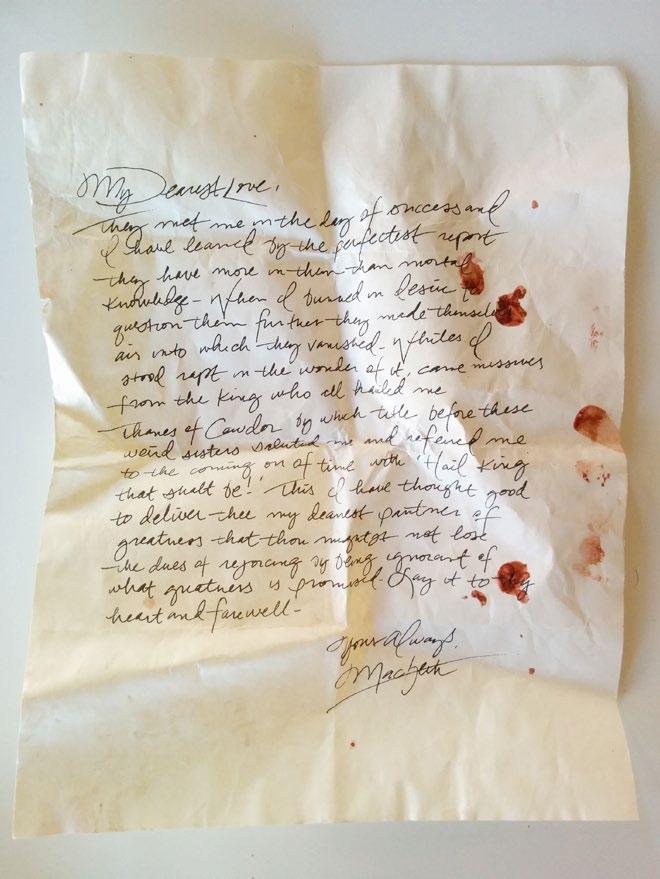
5 minute read
WHAT IS IMMERSIVE THEATER? INTO THE WORLD OF POWER AND FAIRYTALE
Immersive theatre is a style of theatre that seeks to engage the audience as more than just a spectator. Stemming from performance art, immersive theatre attempts to create a more active audience. This can be achieved in a variety of ways and tends to be performance specific. Some immersive work plays with the audience’s sensory experience, adding in elements of temperature, smell, or taste. Sometimes a performance will take place in a non-traditional theatrical setting, such as a nightclub, outdoor space, warehouse, etc. Productions in these nontraditional settings are also referred to as “site-specific” performances. Sometimes immersive theatre experiences break the fourth wall or have interactive elements between performers and audiences, intentionally blurring the lines in the relationship between the two groups.
The most notable immersive play is Punchdrunk theatre’s Sleep No More. Sleep No More first premiered in 2011 and is a re-telling of Shakespeare’s Macbeth. Audience members don neutral white masks and wander at their own pace, over the course of three hours, through a converted warehouse-turned-fictional hotel. They happen upon and witness the characters interacting and playing out scenes in and among different elaborately designed rooms. Each room and floor of the “hotel” has a different sensory output, including strobe lights, fog/haze, recorded music, thunderclaps, and lasers.
Advertisement
Another notable example of immersive theatre is Diane Paulus’s The Donkey Show.
The Donkey Show premiered off-Broadway in 1999 and ran from 2009 to 2019 at
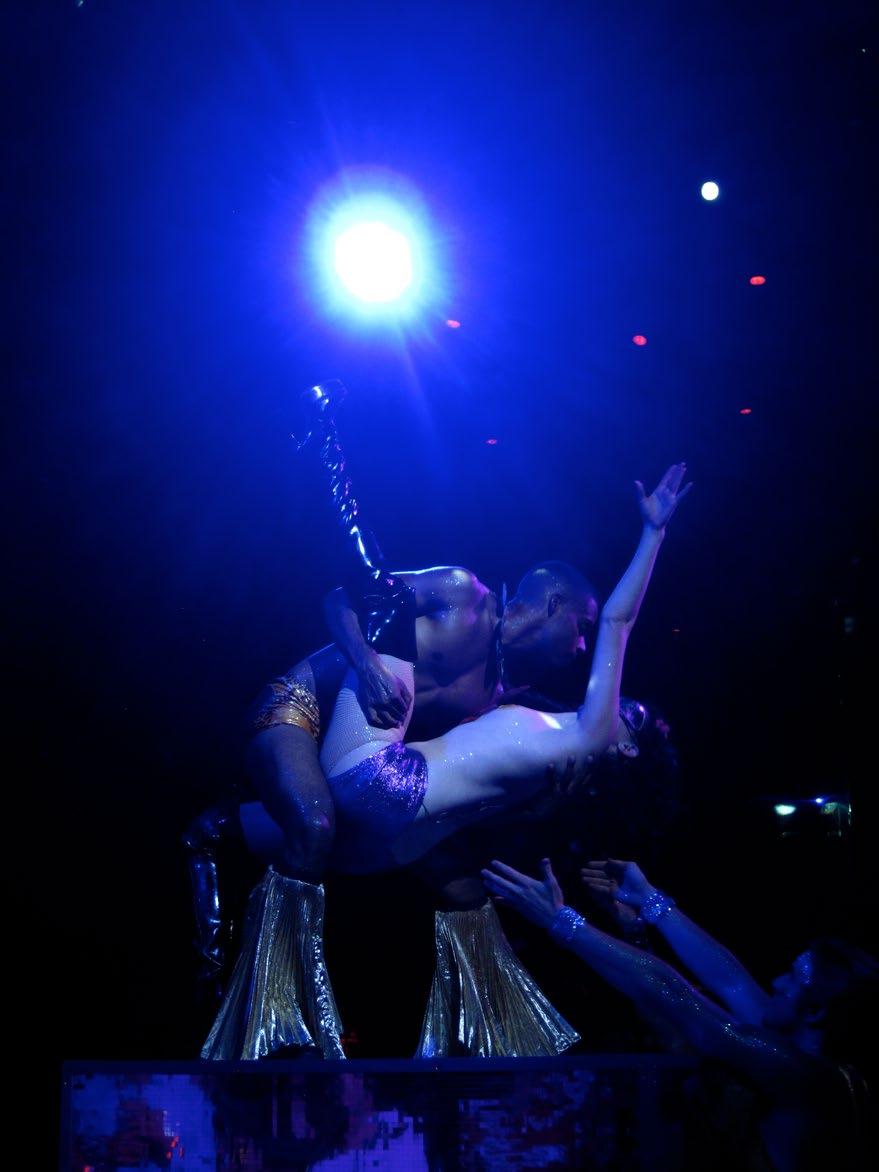
Reflect:
What story do you think would be told well in an immersive theatrical setting?
How would you design it?
BLO’s production of Bluebeard’s
Castle| creates a unsettling psychological situation of a woman recognizing that she may be in danger, and a man hiding truths about his past. To do this, the opera invites audiences into an unexpected setting: the Flynn Cruiseport Terminal overlooking Boston Harbor. In this installation style of theatrical presentation (also sometimes referred to as immersive theatre), the creative team not only stages the dramatic content of the opera itself, but also structures every detail of how the audience navigates and experiences the space.
Did You Know?
Anne Bogart first worked with BLO directing the 2019 production of the opera The Handmaid’s Tale, which was also an installation production in Harvard University’s basketball arena. In Atwood’s book, this very location was known as The Red Center.
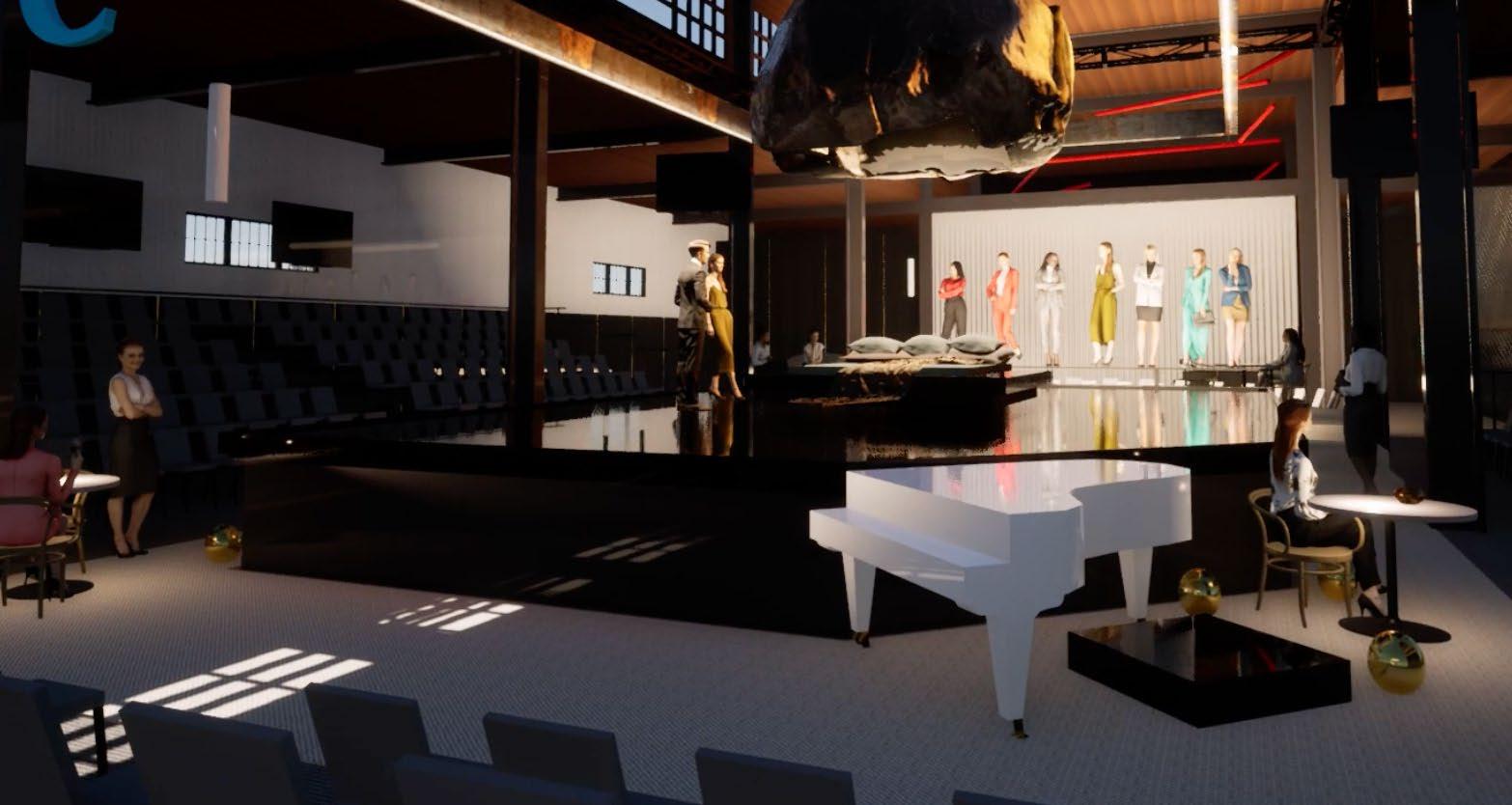
The experience begins as soon as audiences arrive at the building. A sequence of designed spaces lets attendees discover characters and observe intriguing multi-sensory situations before the official performance begins. With no “fourth wall,” stage curtain, or proscenium arch separating the audience from the action, the design invites audiences to see themselves as participants in the world of the opera.
Stage director Anne Bogart’s work often features performer ensembles who inhabit spaces in intriguing, nonrealistic, and revelatory ways. Bogart, with collaborator Tina Landau, is widely known for codifying a movementbased technique called Viewpoints into a compositional methodology for directing and devising theater. Instead of dwelling on the characters’ internal emotional states,
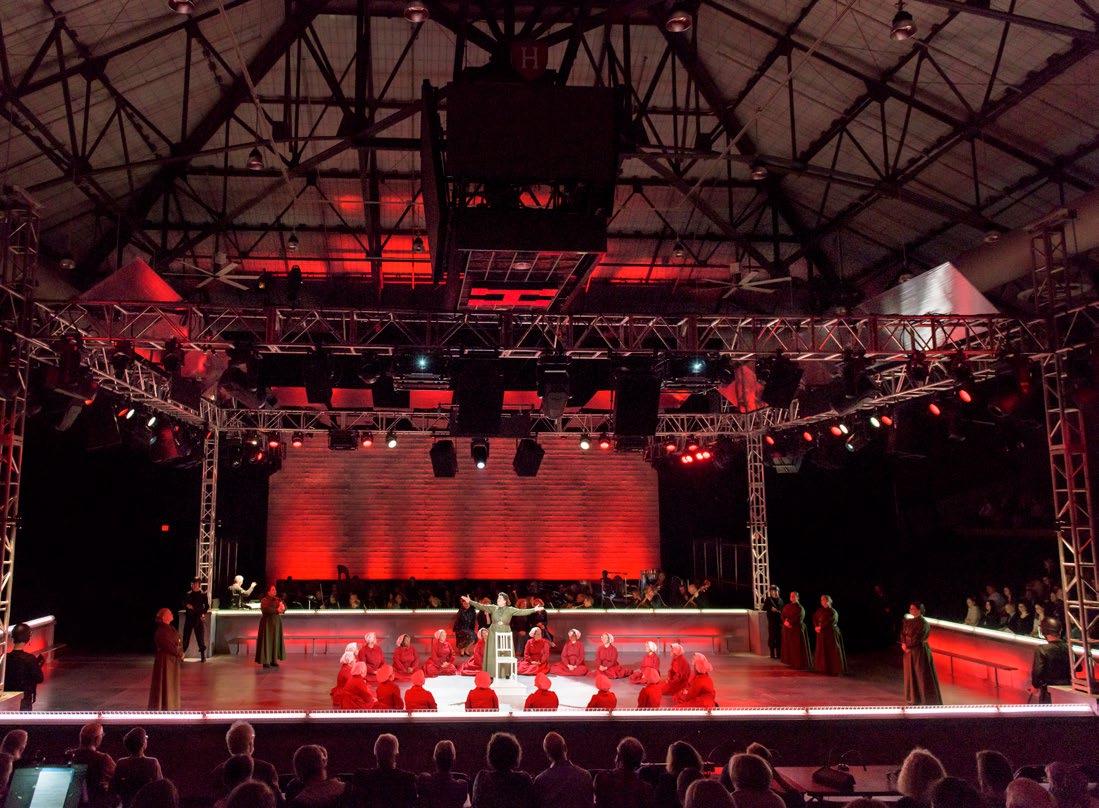
Viewpoints invites performers to cultivate external awareness and create scenes on their feet, physically exploring compositional choices about Space (shape, gesture, architecture, spatial relationship, topography) and Time (tempo, duration, kinesthetic response, repetition).
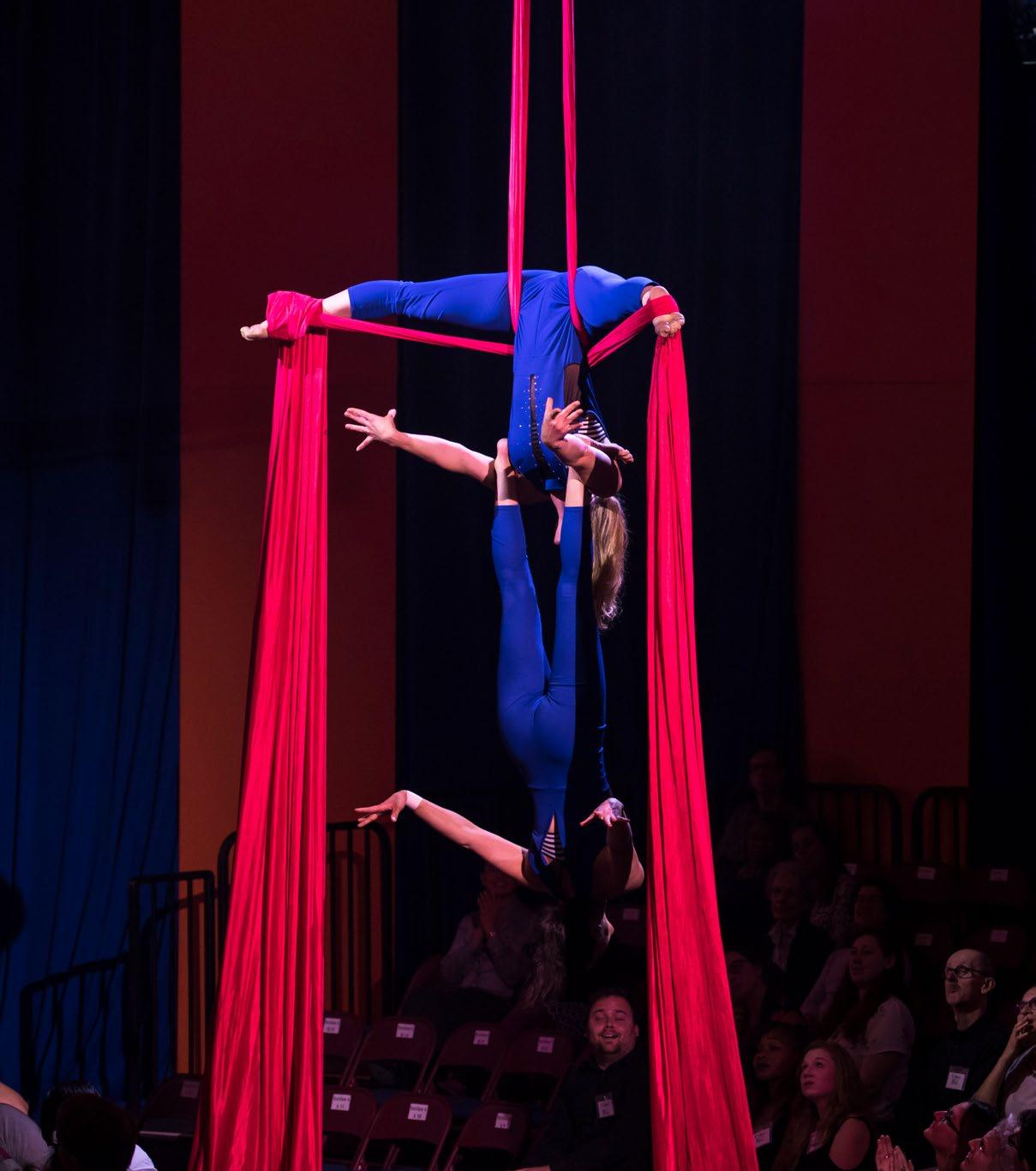
Seduction and power are important themes in the show, and Intimacy Director Angie Jepson worked with the cast to craft moments that explore the carnal dimensions of Judith and Bluebeard’s relationship, as
Safety First!
The role of an Intimacy Director in opera, theater, and film is still relatively new, and becoming much more common as performers advocate for safe working conditions when intimate scenes are being portrayed. This role, similar to a Fight Choreographer, is trained to make these moments seem realistic, while also keeping the performers physically and emotionally safe in the process.
the man or woman, holds the authority to speak and name what is really going on? This theme permeates the contrasting scenic designs in different spaces—there is a noticeable difference in atmosphere between the lobby “salon” space and inside the house where the stage is.
The creative team also drew inspiration from composer Alma Mahler’s personal history and her bon vivant lifestyle in Vienna, where she had very public relationships with prominent artists and writers. Dramaturgical research into her biography informed the artists’ interpretations of Judith, the protagonist in Bluebeard’s Castle. Mahler’s story also suggested novel approaches to the show’s finale. Is Judith doomed to accept her fate, or can she and the other women reclaim their voices?
General Questions To Guide Your Listening
• What instruments do you hear?
• How fast is the music? Are there sudden changes in speed? Is the rhythm steady or unsteady?
• Key/Mode: Is it major or minor? (Does it sound bright, happy, sad, urgent, dangerous?) well as the violence their story suggests.
• Dynamics/Volume: Is the music loud or soft? Are there sudden changes in volume (either in the voice or orchestra)?
• What is the shape of the melodic line? Does the voice move smoothly or does it make frequent or erratic jumps? Do the vocal lines move noticeably downward or upward?
• Does the type of voice singing (baritone, soprano, tenor, mezzo, etc.) have an effect on you as a listener?
• Do the melodies end as you would expect or do they surprise you?
In addition to the two main characters, BLO’s production introduces an ensemble of non-singing performers. These women, who embody Bluebeard’s former wives—implied but not seen in the original opera—are visible to the audience throughout the show. Guided by Movement Director Victoria L. Awkward, their stylized physicality creates a haunting atmosphere, evoking both ghostly apparitions and the psychological dissonance of repressed truths.
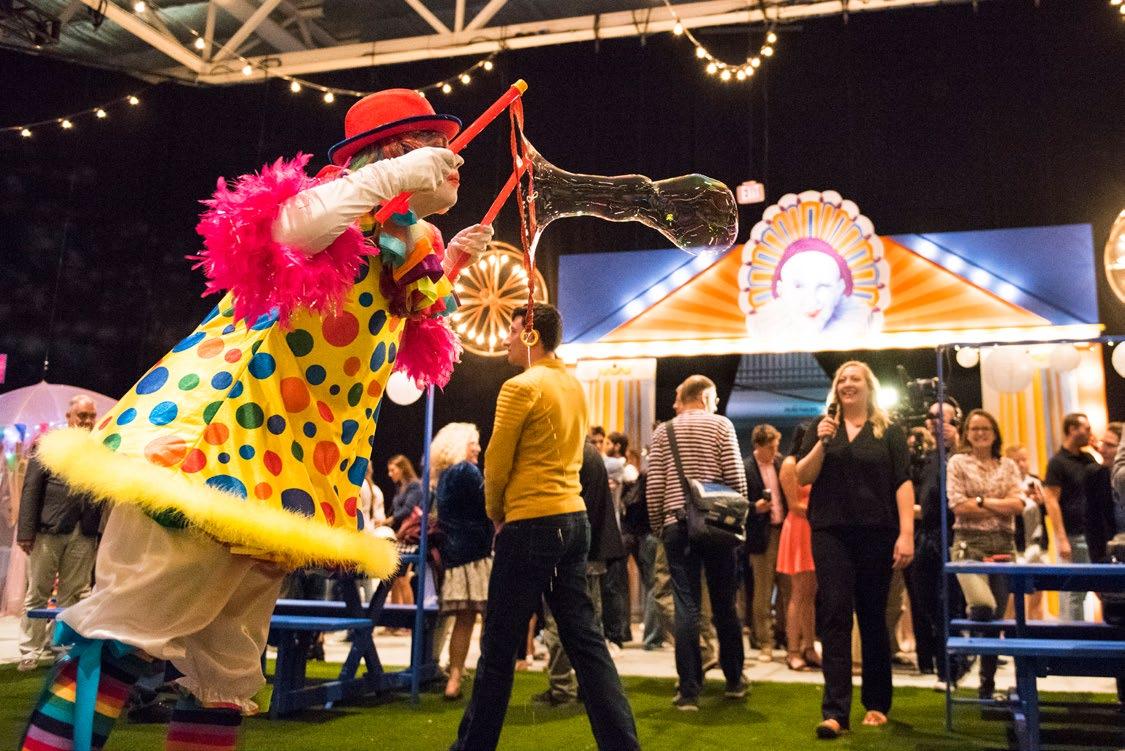
Gender rules, norms, and behaviors strongly inform BLO’s design and interpretation. The choice to pair two pieces—one by a male composer, one by a female— creates a tension around perspective: Which character,
• How does the music make you feel? What effect do the above factors have on you as a listener?
• What is the orchestra doing in contrast to the voice? How do they interact?
• What kinds of images, settings, or emotions come to mind? Does it remind you of anything you have experienced in your own life?
• Do particularly emphatic notes (low, high, held, etc.) correspond to dramatic moments?
• What type of character fits this music? Romantic? Comic? Serious? Etc.
The first two of Alma Mahler’s Four Songs were written in 1901, while the second two were written in 1911, a decade later. What differences do you hear between the second and the third songs in the cycle?
Lieder: No. 2 Waldseligkeit (Forest Bliss) https://open.spotify.com/track/4bjdWI5hVLvAn0kFpdxyaF?si=1jujs6HgTEe5DUyIHLB7wQ
Lieder: No. 3 Ansturm (Onslaught) https://open.spotify.com/track/4s5O10MNCnvH6a5ntheFQg?si=14tK7OppQ42RyyoPwyzbbw
What other composers’ work does Four Songs remind you of? Do you think Alma Mahler was influenced by her contemporaries’ work, or merely by the same predecessors as her contemporaries?
Lieder: No 1 Licht in der Nacht (Light in the night) https://open.spotify.com/track/6UQqaZawYftc6yVsXV5GH2?si=onlumexiT6yufA3PDu9PMQ
Béla Bartók uses a dissonant minor second as a reoccurring motif, known as the blood motif, to evoke an unsettled disquiet, foreboding, and deep sadness. Sometimes it’s at a fast tempo while other times it is slow. Listen to these different selections and see if you can hear when this motif emerges.
Bluebeard’s Castle: II. First Door https://open.spotify.com/track/5g2s8kSoWeLR4HgYzi122k?si=y5kbO8fQRSy505K992TRIg
Bluebeard’s Castle: V. Third Door https://open.spotify.com/track/50AQIP5hq0Px0nlfrJ4ahN?si=4ZLtdIC5SuSfwdOP_qbZHA










